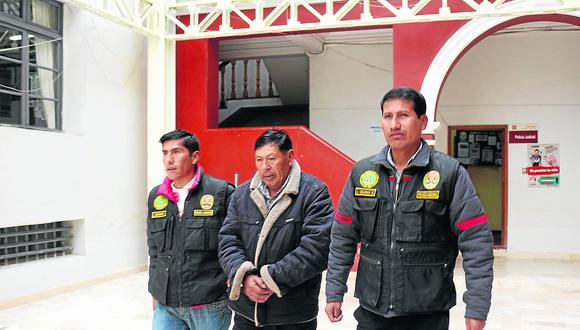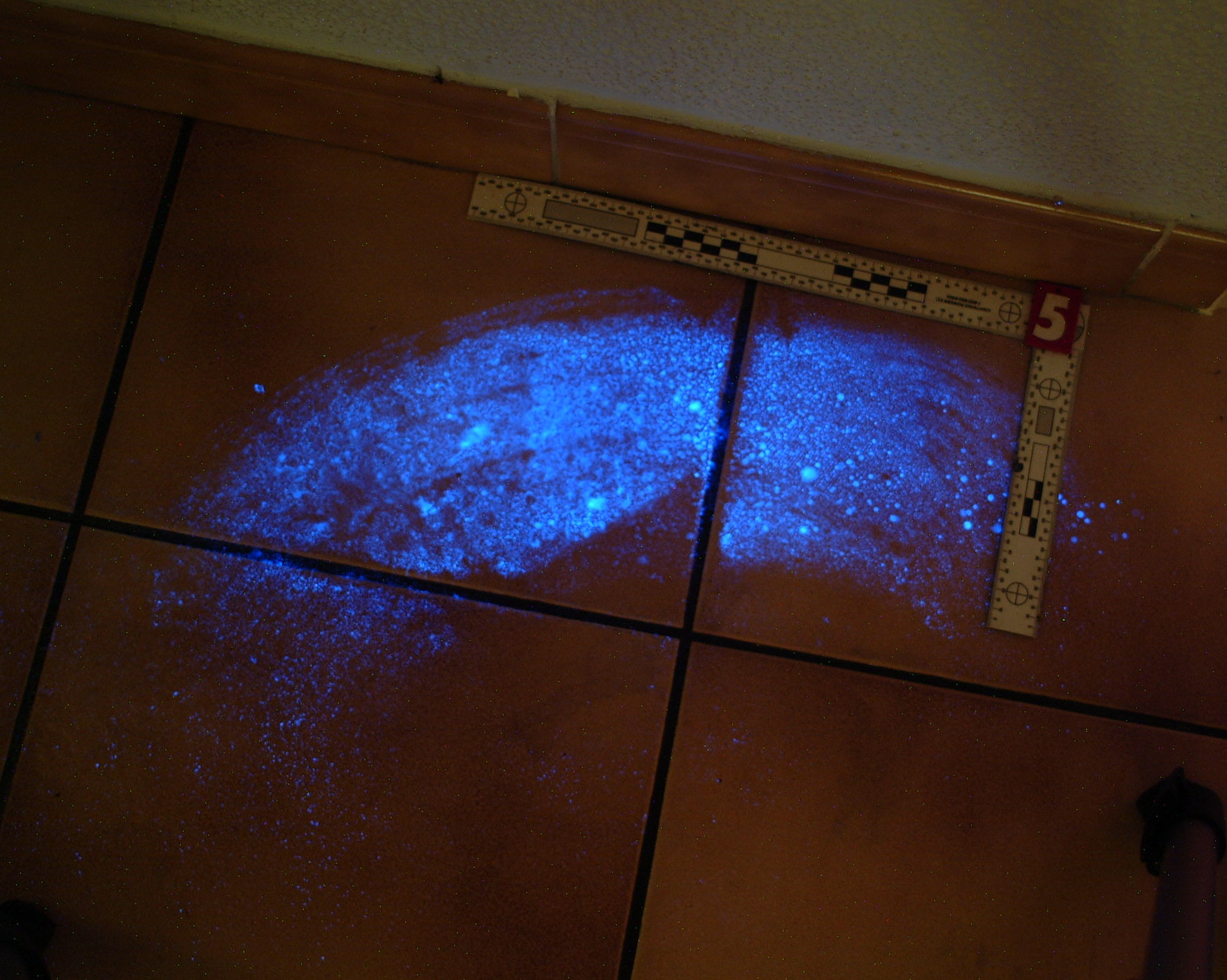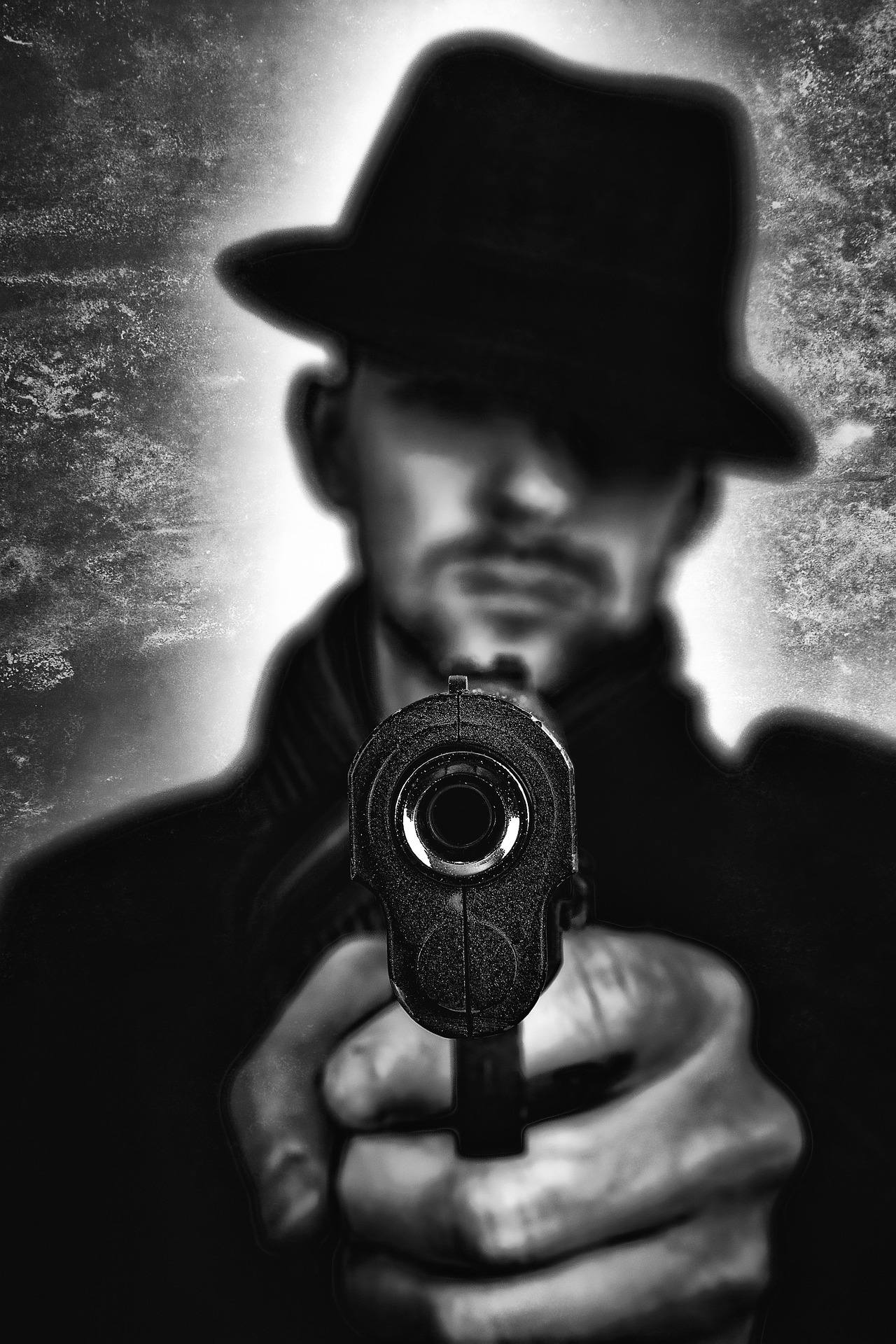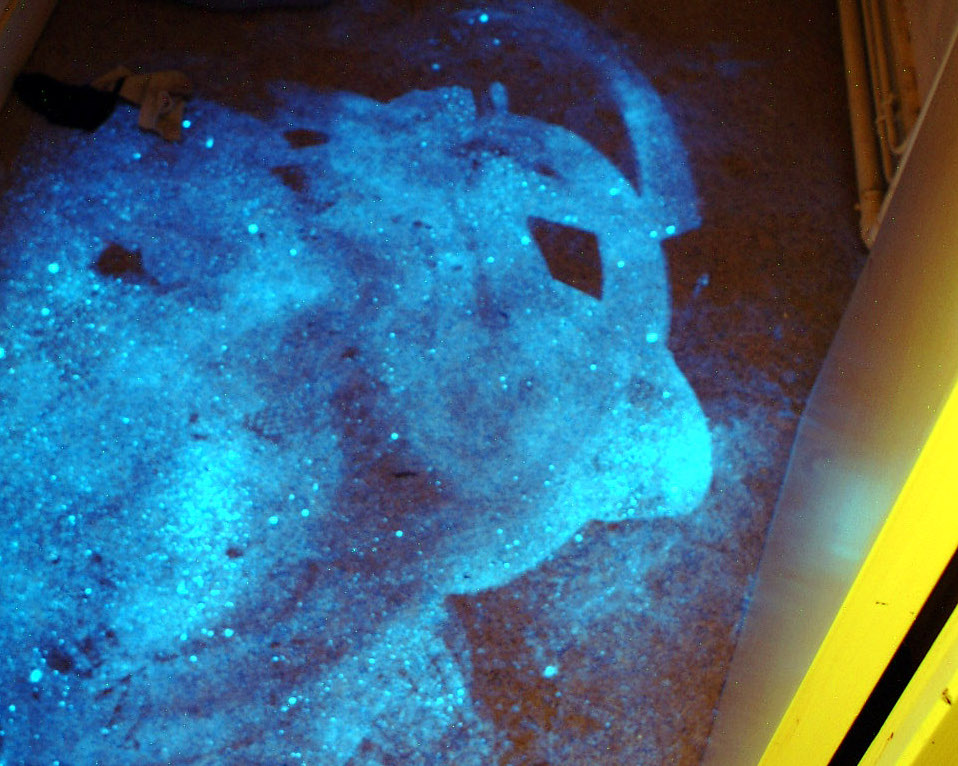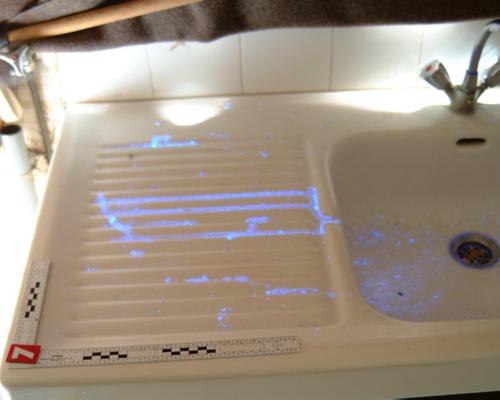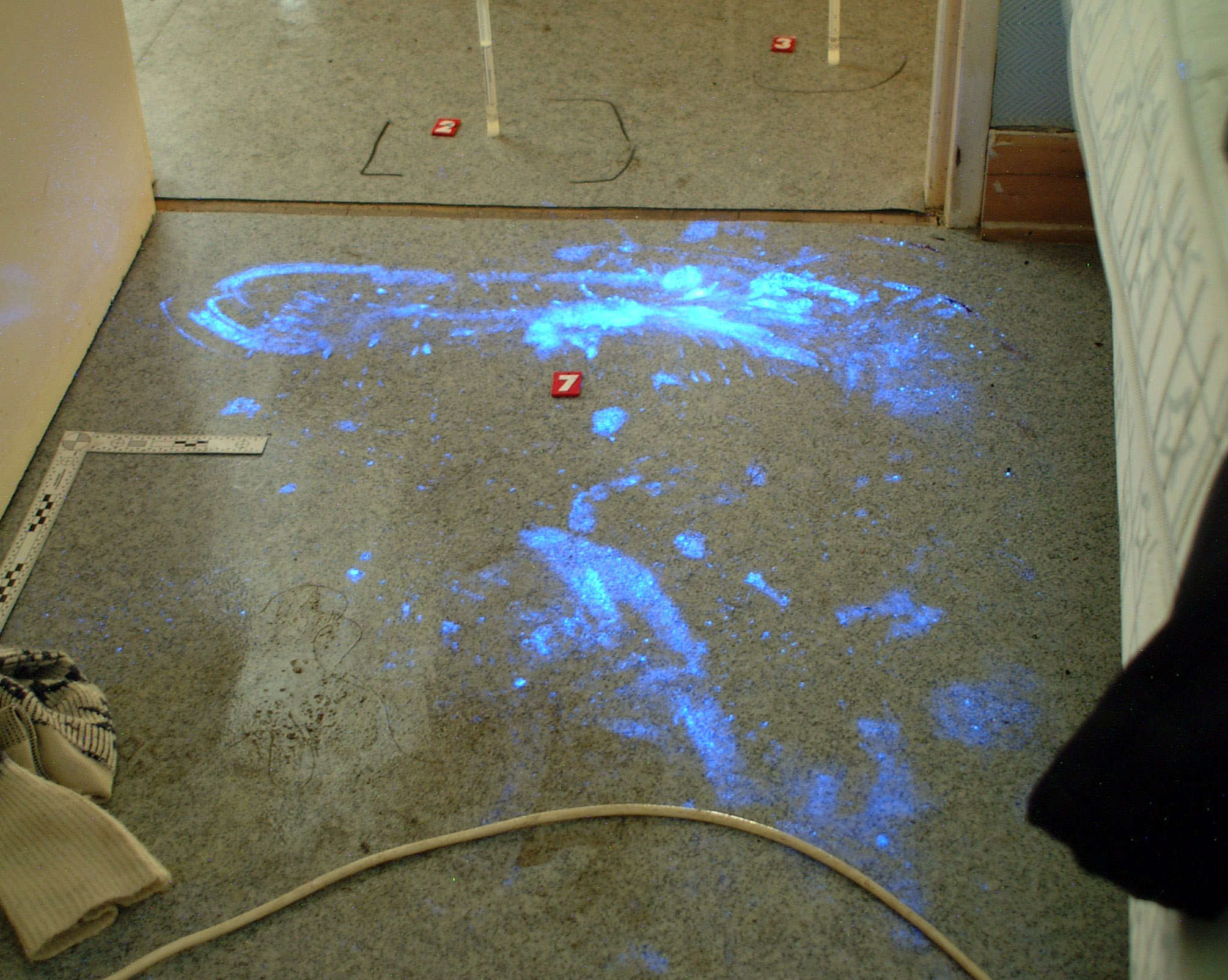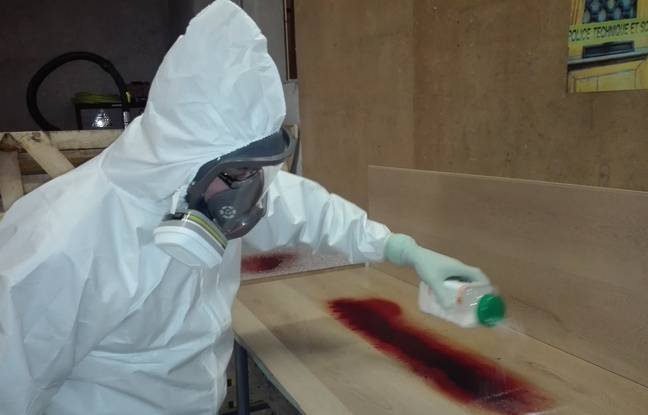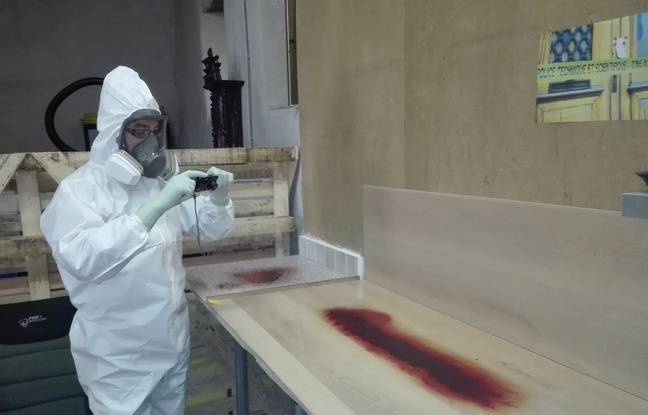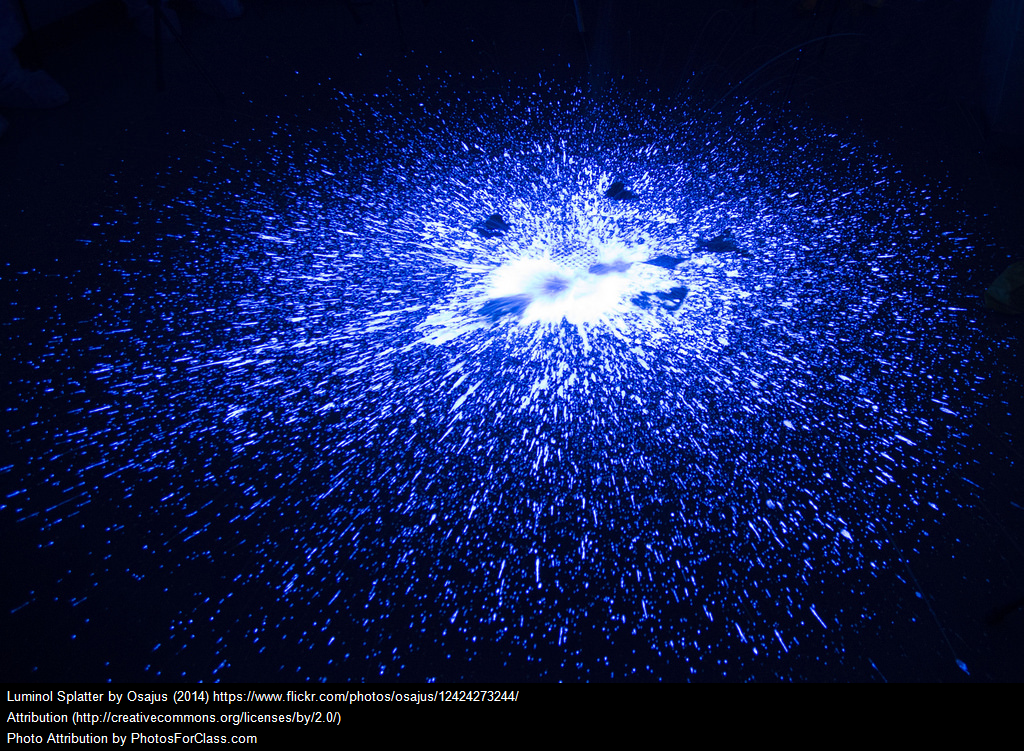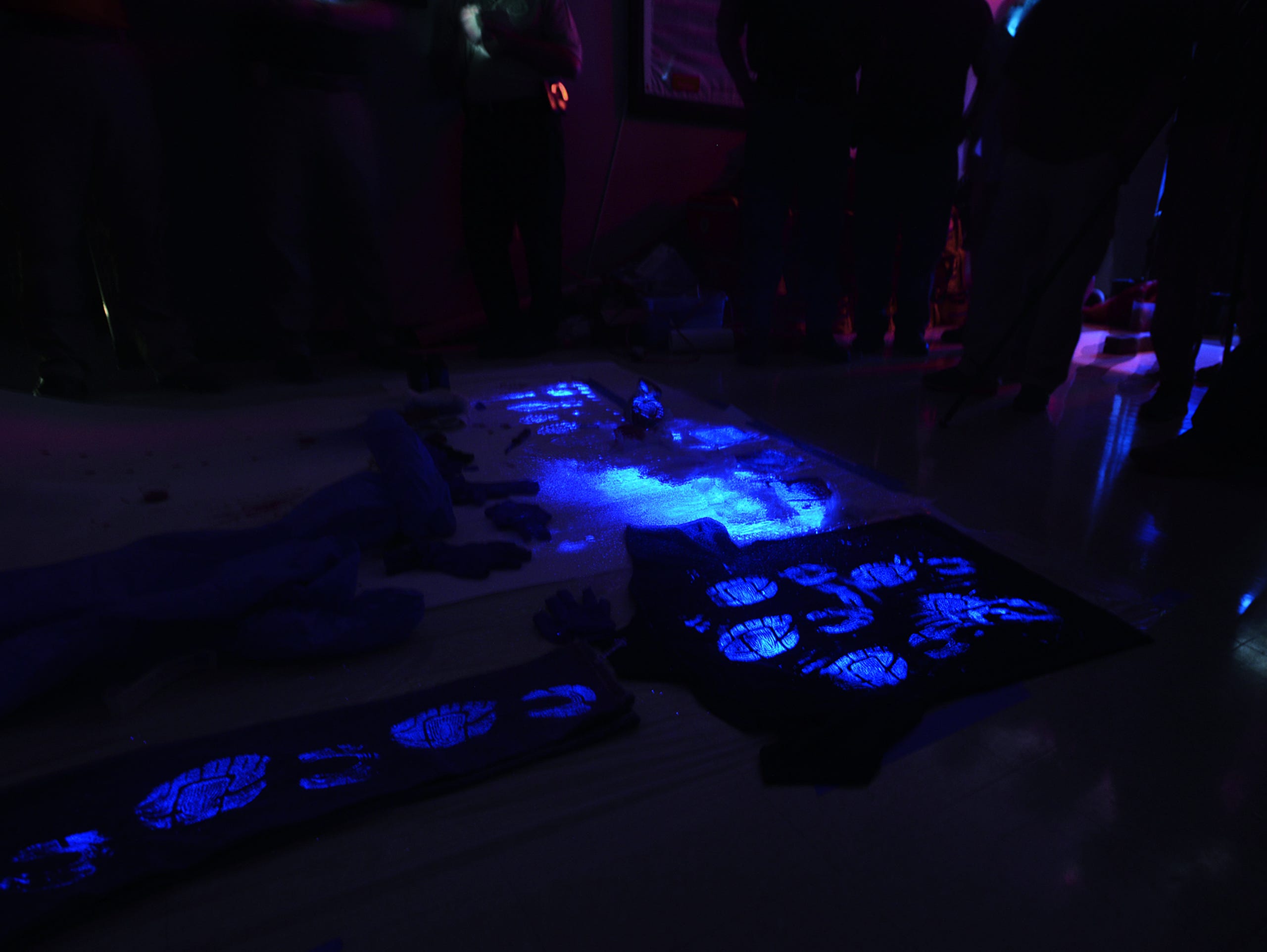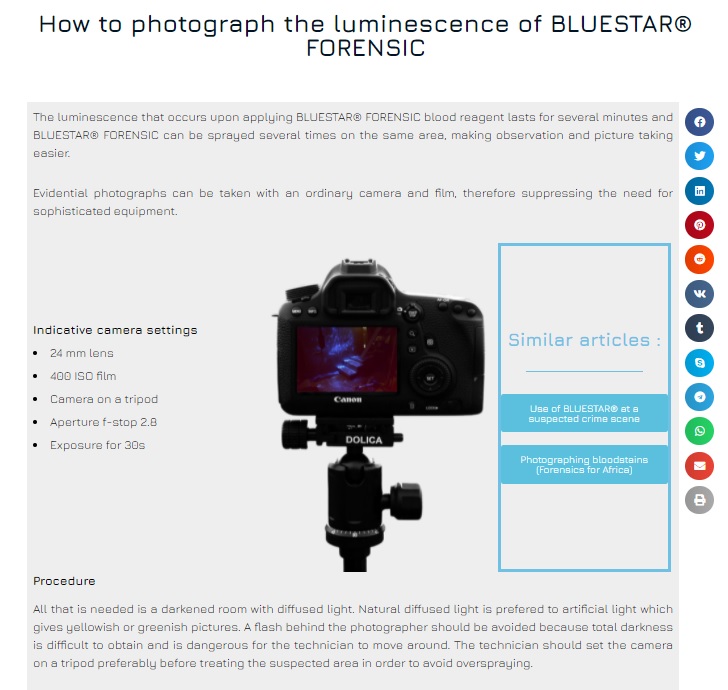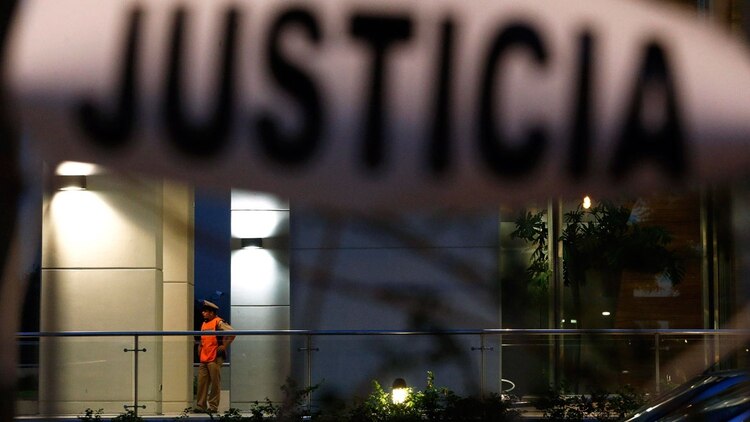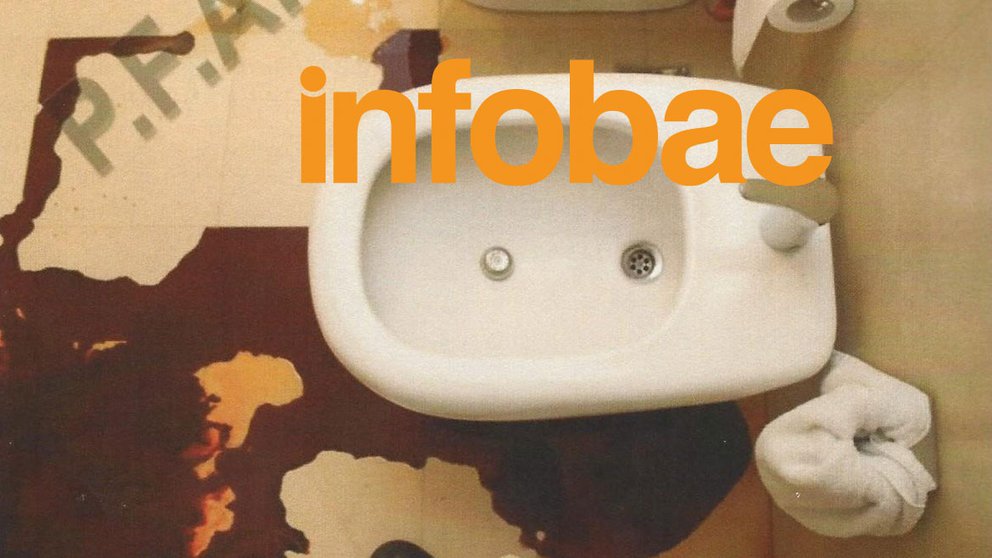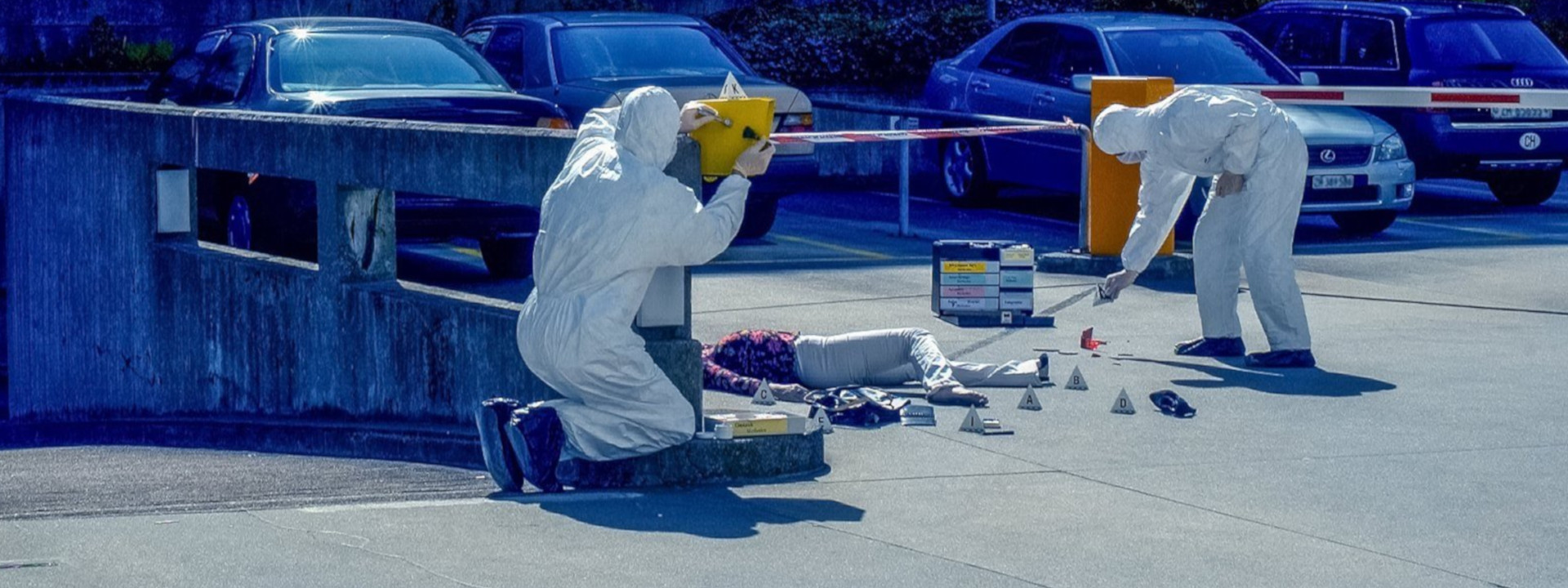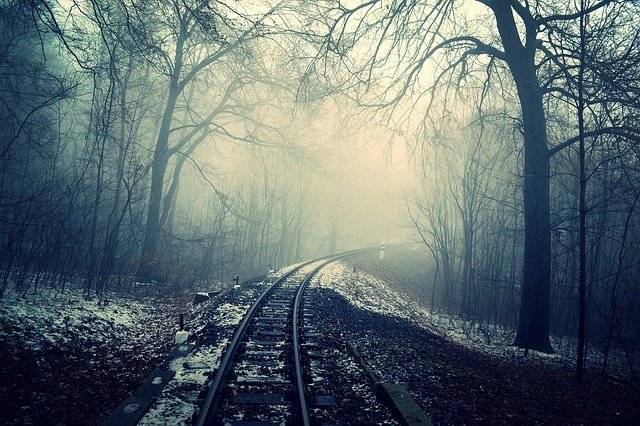BEHIND THE DISAPPEARANCES OF ORVAULT, THE TROADECS' FAMILY TRAGEDY (France Info story)

A blue and white column slowly progresses through a wooded and soggy landscape. Death caterpillar in the mist…
…An examining magistrate, a forensic doctor, an anthropologist and investigators from the judicial police lead the way, followed by a dozen agents from the technical and scientific police, a cohort of CRS and peacekeepers. The group makes its way through this rugged and marshy terrain, tormented by the Zeus storm that has just hit Brittany. The buildings of the Stang farm stand in the background.
Heads are bent, looking for the slightest clue. Thirty-two hectares to be combed for fragments. Body parts, scattered, pulverized. We are not at the site of an air disaster, but at a crime scene. There are four victims, Brigitte and Pascal Troadec, aged 47 and 49, and their two children, Charlotte and Sébastien, aged 18 and 21.
It is on this image, captured on 8 March in Pont-de-Buis (Finistère), that the case of the missing persons of Orvault, which has become that of the Troadec family, closes. A terrible story, which began two weeks earlier, 280 km away, in a house in Loire-Atlantique. The story.

THE DISAPPEARANCE
Still no message, no call. From Landerneau (Finistère), Denise is worried. For several days now she has had no news of her daughter, who lives in Orvault (Loire-Atlantique).
His phone doesn’t answer anymore. Brigitte is used to calling him every week. A few streets away, Hélène is just as worried. No sign of her sister or her family. She can’t take it anymore and calls her work, the tax office in Nantes. Brigitte didn’t show up on Monday 20 February, the day she was supposed to return to work after a few days’ holiday. Her anxiety grew. Hélène contacted the police to report her disappearance.
The police arrived at the Troadec family’s house, located in a residential area of Orvault. The shutters are closed, the one-storey house is empty. The heating was turned off and the temperature was 8°C. The sheets have been removed from the beds. In the bathroom, no toothbrush or hairbrush. A cup and a glass are found in the kitchen sink. In the fridge, several items of food had expired. Sheets, not quite dry, are spread out inside. Wet clothes are still in the washing machine.
It is as if the house had stopped living at a given moment. (Pierre Sennès, public prosecutor in Nantes, in Presse Océan).
The investigators notice pinkish marks on the staircase, as if blood had been summarily wiped off. In a room on the ground floor, a mobile phone and its earpieces were stained with blood, as was a pair of socks. The technical and forensic police arrive as backup. With the help of the Bluestar, they detect other traces of blood in significant quantities on the floor. A watch, broken and stained with blood, was found under a bed. Everything suggests that a “scene of violence”, in the words of the prosecutor, took place in this house. The analyses quickly confirm these fears: the blood does belong to three members of the family, Brigitte, Pascal and Sébastien.
An empty house, traces of blood, no body… The case immediately evokes another, which has marked the minds in Nantes. In 2011, the remains of the wife and four children of Xavier Dupont de Ligonnès were found after several days under the terrace of a bourgeois house in the City of Dukes. The father, the presumed murderer, is still untraceable today. In the Troadec case, the investigation, opened for “deliberate homicide, kidnapping and sequestration”, is quickly directed towards a family member. Especially since a detail intrigues the investigators. In front of the house, the couple’s two cars, an Audi and a BMW, are still parked. But the son’s car, a Peugeot 308, is missing.

THE SON'S FALSE TRAIL
The neighbourhood investigation begins. With its share of banalities. The Troadecs are described as “reserved people” who had been living in Orvault for at least ten years. “They were people who didn’t talk about themselves and who didn’t necessarily want to make friends”, according to a neighbour. In the neighbourhood, the morning “good morning” has dried up over time.
Some people mention the “depressive disorders” from which the father, employed in an SME specialising in the manufacture of illuminated signs, suffered “in the past”. His son is portrayed as having “suffered from psychological fragility”. The possibility of a father-son family dispute is emerging. Investigators and the media are looking into the digital life of the teenager, a second year student of BTS Digital Systems in Saint-Laurent-sur-Sèvre (Vendée). The son of Xavier Dupont de Ligonnès attended the same school. The fantasy machine is running wild.
Sébastien had created, like many teenagers of his age, several profiles on different social networks. In the midst of hundreds of harmless comments, a few old messages were enough to obscure the portrait of the young man. In 2014, at the age of 18, he tweeted: “I can’t take it anymore, I want to die but I can’t even do it”. On the Ask.fm forum, someone asked him if it was “possible to justify murder”. “The thing I hate the most? My reflection,” he writes again, quick to denigrate himself or talk about his own death.
In 30 years, I’ve been dead for 27 years.
Sébastien Troadec, on his Twitter account, in 2014.
Sébastien Troadec also confided on social networks his disagreement with his father. “I’m fed up with this, I’m going to the police station to lodge a complaint against my father”, “for moral harassment :'( #LT”, he stormed in April 2013. “My father is a big fucking alcoholic asshole because he farts in the shower and says it’s my fault when he’s the last one to have taken one,” he ranted a week later. There is also this message, dated May 1: “If they really knew what was going on in my head, they’d think I was crazy without morals. Photos of him posing with a knife or with his face hidden by a scarf were reported in the media. Le Parisien reported that he was sentenced to community service in 2013 for death threats.
While some testimonies confirm Sébastien’s “somewhat special” personality, his friends argue that it is only the construction of an online persona. In Le Parisien, his maternal aunt assures us that “Sébastien was getting better and better since he entered the BTS. He had many friends and went out with them at the weekend. He was more open. My nephew had literally transformed himself. He felt better about himself.
Nevertheless. If the investigators remain cautious and are exploring all avenues of investigation, the wanted notice broadcast to the whole of France mentions the possibility of “a disastrous project” by the son, “aimed at eliminating the members of his family and perhaps himself”. Among the disturbing elements, his mobile phone, the last to be switched off on the night of 16 to 17 February.
THE MORBID TRAIL GAME
The case of the missing persons of Orvault holds the country in suspense. But the investigation is stalling. At least in appearance.

The journalists cling to the slim elements that are filtering through: Charlotte, 18, went to the police station with her mother to lodge a complaint on the day of the disappearance. The reason was that her bank card had been hacked to buy video games… The focus was again on Sébastien, who was described as a “geek”. Mother and daughter would then have bought sushi. Consumable until 17 February, they were found in the fridge. So many clues reported by the press but which do not provide the beginning of a serious lead…
One detail is bothering the investigators: the blood of Charlotte, who has been at school since the beginning of the school year at the Notre-Dame de Fontenay-le-Comte high school (Vendée), in the first year of a BTS, was not found in the house. What happened to her? Plane tickets for Portugal, dated 10 April, were also found in the letterbox.
It was 27 February, ten days after the Troadecs’ disappearance, and the mystery remained. The public prosecutor’s office opened a judicial investigation and appointed two investigating judges. Two days later, the case had its first twist: a pair of trousers, a bank card and Charlotte’s Vitale card were found by a jogger in Dirinon (Finistère), near Brest. The next day, 500 metres away, investigators discovered two children’s books belonging to Pascal Troadec. But the real turning point came when Sébastien’s car was spotted in the car park of a church in Saint-Nazaire (Loire-Atlantique). The floor mat had disappeared, but no trace of blood was visible to the naked eye.
For the psycho-criminologist Jean-François Abgrall, the perpetrator “favours disorienting the investigators”. During a new press conference, eagerly awaited by all the media, the prosecutor Pierre Sennès confirmed “a possible morbid game of chance” and an “extraordinary case”. The magistrate also dismissed the hypothesis that Charlotte’s credit card had been stolen or used by Sébastien. The teenager and her mother went to the bank, not the police station, to stop Charlotte’s card. Charlotte herself had bought video game credits on the internet as a gift for Sébastien, and realised that the sum debited via an American server exceeded the purchase price. The brother’s trail seems to have gone cold.
THE BROTHER-IN-LAW'S CONFESSION
Officially, Sébastien’s car has not yet revealed its secrets. The prosecutor had warned that the results of the analyses would not be communicated in real time, to preserve the investigation. Unofficially, the investigators have a major clue: the DNA of Hubert Caouissin, Pascal Troadec’s brother-in-law, was found in the vehicle – on the headrest, according to Le Parisien. Another secret point: the companion of Lydie Troadec, Pascal’s sister, also left his genetic fingerprint in the Orvault house, on a glass.
If it is impossible to date this DNA, these elements contradict the version of the individual, heard in the early stages of the investigation. While in police custody, Hubert Caouissin had explained that he had not seen the Troadecs for a long time, because of a dispute over an alleged inheritance. On 5 March, the man and his companion were again placed in police custody. The information circulated, giving a whole new direction to this drama.
Time was running out, as the investigators had already used up the number of hours in custody. During the night, Hubert Caouissin breaks down and confesses. Yes, he killed the four members of the Troadec family for a story of “gold coins”. France wakes up with the name of a presumed culprit. A few hours later, Pierre Sennès gives another press conference and literally transports the audience to the scene of the quadruple murder. A one-shot story, based on the statements of the 40-year-old.
On the evening of Thursday 16 February, Hubert Caouissin went to the Orvault pavilion with “the intention of spying to see if he could gather information on this inheritance problem”. He applied “a stethoscope” to the window to try to listen inside the house. Later that evening, the suspect waits for the family to go to bed before entering the house and hiding in the laundry room. “He enters with the intention of retrieving a key seen on a piece of furniture,” the magistrate continued. But in trying to achieve his goal, the suspect made a noise, attracting the attention of the Troadec couple, who went downstairs “with a crowbar”. Hubert Caouissin managed to get hold of it. Refusing to give “more precise details”, the prosecutor evokes a “criminal scene of great violence”.
The rest of the scenario was recounted by Pierre Sennès and then clarified by Le Parisien the following days: Hubert Caouissin stayed with the Troadecs until the early hours of the morning, before returning home to the Pont-de-Buis farm, where he had been living for two years with Lydie Troadec. According to the newspaper, the presumed murderer immediately confided in his 8-year-old son, even before talking to his partner.
You will see, they will tell you that your father is a monster. But I’ll explain and tell you the truth.
Hubert Caouissin to his son, according to comments reported by Le Parisien.
The couple returned to Orvault on the evening of the 17th and 18th. Hubert Caouissin washed the house while Lydie waited in a car with a walkie-talkie, Le Parisien reported. A macabre detail reported by the newspaper: exhausted by the cleaning, the presumed murderer fell asleep for four hours in Sébastien’s bed. The duo left with the bodies, loaded into the 308. For two or three days, Hubert Caouissin tried to make the bodies disappear,” said Pierre Sennès. It seems that the bodies were dismembered, one part buried, the other part burned.
Then, with the help of his companion, Hubert Caouissin cleaned Sébastien’s vehicle and left it in Saint-Nazaire “a little bit at random”. “His idea was to direct the search towards the port. A sort of diversion,” the magistrate said. The suspect also took the family’s belongings with him to make it look like he was going on holiday. Hubert Caouissin is under investigation for “murder” and “attacking the integrity of a corpse”, his companion for “altering the state of a crime scene and receiving corpses”. Both were imprisoned.
A matter of gold and blood
(Audio)
Inscrivez vous à notre newsletter :
Pays
Année
Archives
- July 2023 (1)
- March 2023 (1)
- September 2022 (1)
- April 2022 (1)
- February 2022 (1)
- January 2022 (1)
- November 2021 (1)
- October 2021 (1)
- September 2021 (3)
- June 2021 (2)
- May 2021 (3)
- November 2020 (1)
- October 2020 (1)
- August 2020 (1)
- June 2020 (1)
- February 2020 (1)
- October 2019 (1)
- September 2019 (1)
- May 2019 (1)
- April 2019 (2)
- August 2018 (2)
- July 2018 (1)
- June 2018 (1)
- May 2018 (1)
- February 2018 (1)
- January 2018 (1)
- May 2017 (4)
- March 2017 (1)
- August 2016 (1)
- July 2016 (1)
- January 2016 (1)
- June 2015 (1)
- July 2014 (2)
- March 2014 (1)
- September 2013 (3)
- June 2013 (1)
- December 2010 (1)
- June 2010 (1)
- January 2010 (1)
- March 2009 (1)
- March 2008 (1)
- September 2007 (1)
- July 2006 (2)
- August 2005 (1)
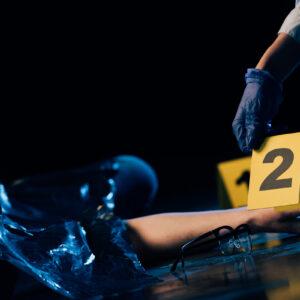
Forensic PSA Test: BLUESTAR® Identi-PSA® – The Essential Tool for Crime Scene
Forensic PSA Test: “BLUESTAR® Identi-PSA®” An Essential Tool in Forensic
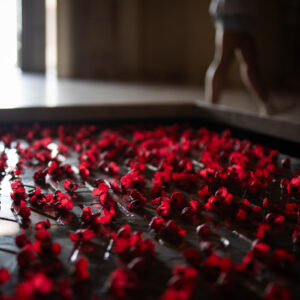
Rose Petal Murder: The Case Involves the Use of BLUESTAR® Forensic Reagent
The brutal murder case of Christina Parcell in South Carolina is drawing national attention and …

Chemical indicates the presence of human blood in the trailer
After detectives photographed the inside and took some items into
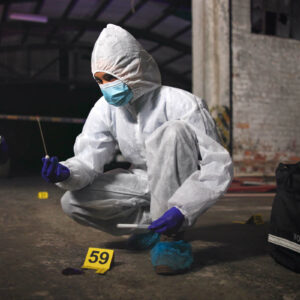
KU Leuven Students Investigate Virtual Crime Scenes
Investigating murders as a forensic expert… (India Education : Apr

Forensics, the latest methods
When pollen and insect larvae are used to solve criminal
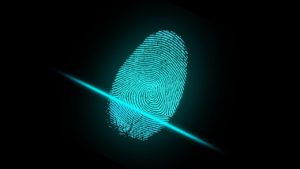
How does the scientific police work?
How does the scientific police work?(Le Mag de France Bleu
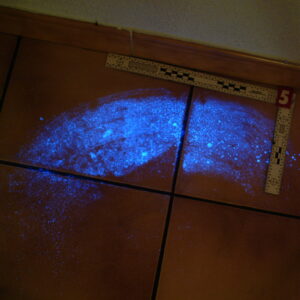
Forensic science, clue hunters
Tarbes: Scientific police, the clue hunters La nouvelle république des
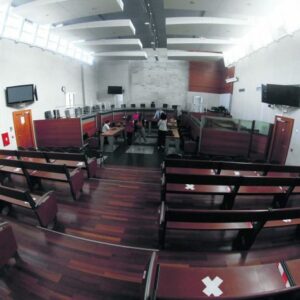
Lemerle case: traces of blood revealed by Bluestar
On the first day of Vanessa Lemerle’s trial for the

A state-of-the-art portable crime lab
Costa Rica’s First Female Forensic Biologist Designed a State-of-the-Art Portable
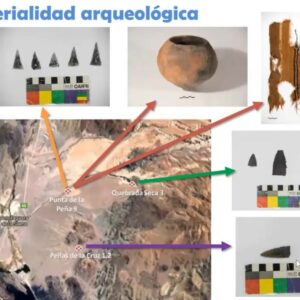
“With the blood in the eye” Bioarchaeology and Biomaterials.
“With blood in the eye”. Romano et al. Axis 1

Canine Handlers and Forensic Specialist Testify in Smart Hearing on 2021 Searches
Canine Handlers and Forensic Specialist Testify in Smart Hearing on

Troadec case: traces of blood, burning of the bodies, the word of the experts.
The trial of Hubert Caouissin and Lydie Troadec continued with

Alleged serial killer: new excavations and Bluestar in the orchard
Could the crime scene at Mare-d’Albert be hiding other sordid

Police brought Agostina’s alleged femicide to Neuquén
A commission of the local police force transferred Juan Carlos

Detecting Blood in an Outdoor Environment with the Bluestar Reagent and DNA Analysis
Author(s): McCall, Keenan; Woods, Grace; Richards, Elizabeth Type: Article Published:

Thomas Lesire trial: These clothes are examined with Bluestar reagent
Assizes: trial of Thomas Lesire, accused of the murder of

Daval case: investigation and use of Bluestar
Daval trial: life sentence requested against Jonathann Daval accused of

Case of a missing youth: raids and investigation procedures continue
The procedure was carried out jointly with police personnel from
Galveston AA group leader’s killer is still out there after 2 years
Galveston AA group leader’s killer is still out there after
He had tried to erase the trace of the victim’s blood
The baby was beaten and tortured, recorded in bruises, scratches,
Policeman’s Memory : a barbaric crime!
By Fadel ATAALLAH – POLICE magazine N° 57 Octobre 2009
Narumi case: investigators accuse the main suspect
The Chilean ex-boyfriend of this Japanese student who disappeared in
Christine Wood’s DNA found in Brett Overby’s basement, court says
CBC NEWS : 02.05.2019 Christine Wood’s blood was found on
Bluestar, the miracle product that solves many criminal investigations
Bluestar, which was developed in a CNRS laboratory, has become
Justice for the Lyon Sisters
How a determined squad of detectives finally solved a notorious
Jealous husband in South Africa kills his wife’s lover.
Jealous husband in South Africa kills his wife’s lover.
Murder of a woman by her son
This matricide was solved by the French Gendarmerie Nationale using
Alexia Daval case: other acts and hearings to come
L’est Républicain : 07.07.2018 New forensic expertsAbout forty experts of
JESSIE BARDWELL CASE: WAS TEXAS WOMAN’S DEATH AN ACCIDENT OR MURDER?
A father dreams his daughter has been killed, then she
They capture the partner of a mannequin
The subject claimed that when he arrived at the apartment
Scientific advances have made a blood trail speak for itself
Maëlys: how scientific progress made a microscopic trace of blood
Invisible bloodstains revealed by Bluestar
Mallouk case: the long trial of a murder without a
A matter of gold and blood
BEHIND THE DISAPPEARANCES OF ORVAULT, THE TROADECS’ FAMILY TRAGEDY (France
Killer of elderly woman confesses he had help from hitman
Puno: the killer of an old woman confessed to having
The murderer of an old woman confessed to having been helped by a hitman
Puno: the murderer of an old lady confessed having been
The scene of a crime, suicide or natural death has no mystery for the “cleaners”
It’s a job that is rarely mentioned, as if to
Improved detection of Luminol blood in forensics
Review: Improving Luminol Blood Detection in Forensics Florida Forensic Science
Officers get forensics training
A couple dozen first responders and crime scene investigators gathered
Photographing bloodstains
Photographing bloodstains: Bluestar reagent FORENSICS 4 AFRICA 07.07.2016 (Nick Olivier)
Mystery around a disappearance
Yves Bourgade’s murder: BLUESTAR® FORENSIC strengthens suspicions about his wife…
Nisman case: the conclusions of the criminal report
Nisman case: conclusions of the official criminal report point to
Traces of blood were found in his marital home, revealed by the “Bluestar”.
Share on facebook Share on twitter Share on linkedin Share
The judge in the Yexeira case accepts as evidence another piece with blood on it.
To complete the process of authenticating the evidence, the magistrate
20 years of forensic bloodstain analysis in Ontario
While University of Windsor students play with spatter at a
Chief Warrant Officer Benitez left a bloody trail
The clues are accumulating around Chief Warrant Officer Benitez and
El suboficial mayor Benítez dejó un rastro sangriento
Las pistas se acumulan en torno al suboficial mayor Benítez
L’adjudant-chef Benitez a laissé un sillage sanglant
Les indices s’accumulent autour de l’adjudant-chef Benitez et de son
The Flactif case: An investigation solved with Bluestar
At a crime scene, he makes the bloodstains talk “When
Photographer Exposes Crime Scenes, With a Dash of Chemistry
Share on facebook Share on twitter Share on linkedin Share
Bloody gloves in Israël
Bloody gloves “catch” Israeli attorney Anat Plinner’s murderer…
Forensics, how does it work?
Share on facebook Share on twitter Share on linkedin Share
Flactif, The cursed cottage is for sale
The parents of Xavier Flactif, massacred with his family in
The blood of two confederate soldiers revealed at Gettysburg
Gettysburg Civil War case revealed after 142 years !
Suspect arrested on crime scene after his arms turn blue !
A man arrested after his arms turn blue…
The secrets of real experts (LE FIGARO)
Philippe Esperança, morpho-analyst: Blood on the trail By Le Figaro,
The Flactif case: With Philippe Esperança
BLUESTAR® FORENSIC helped solve the Grand-Bornand quintuple murder case The
Shooting of a pedestrian by a driver
A driver shoots and kills a pedestrian…
